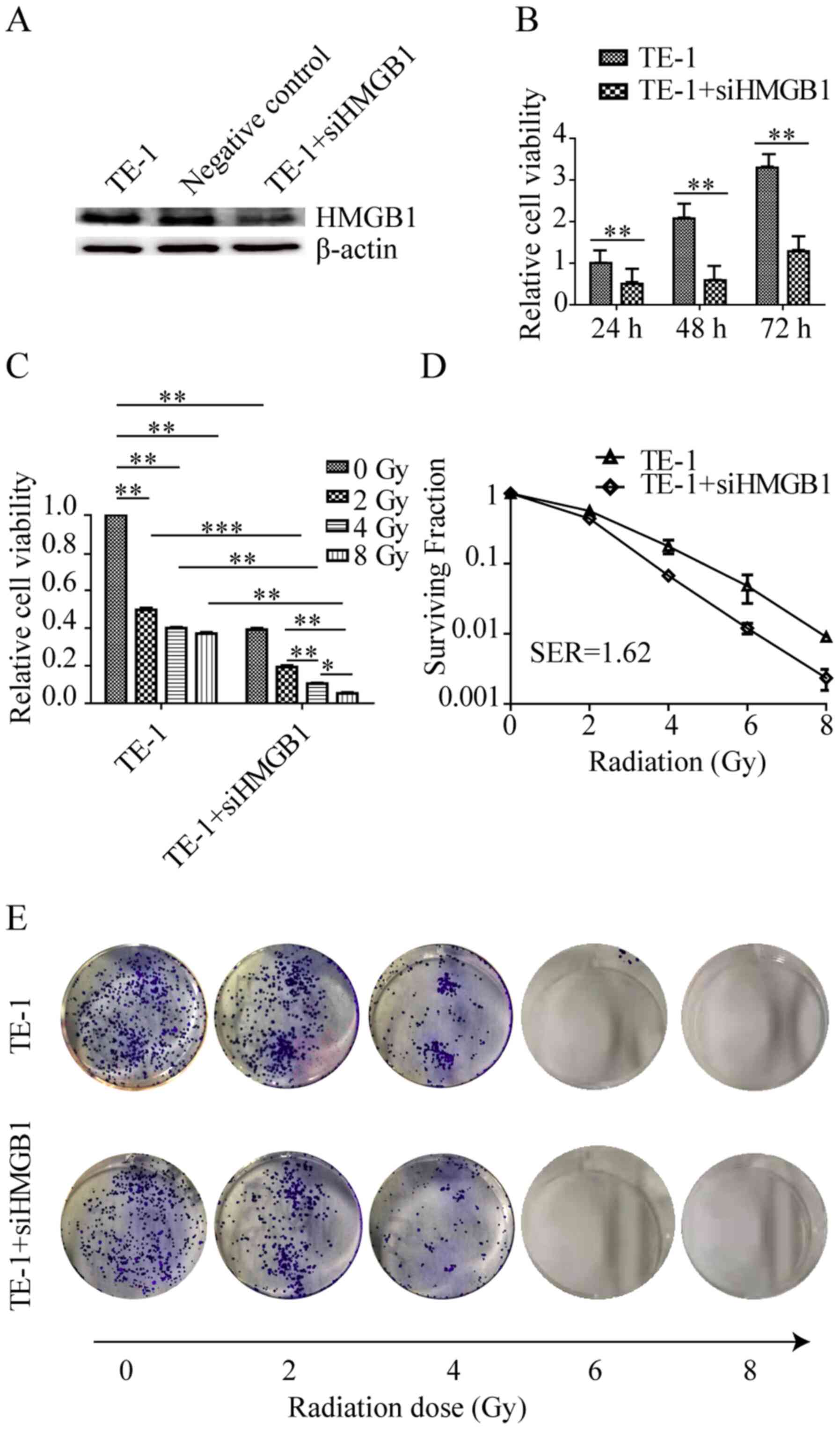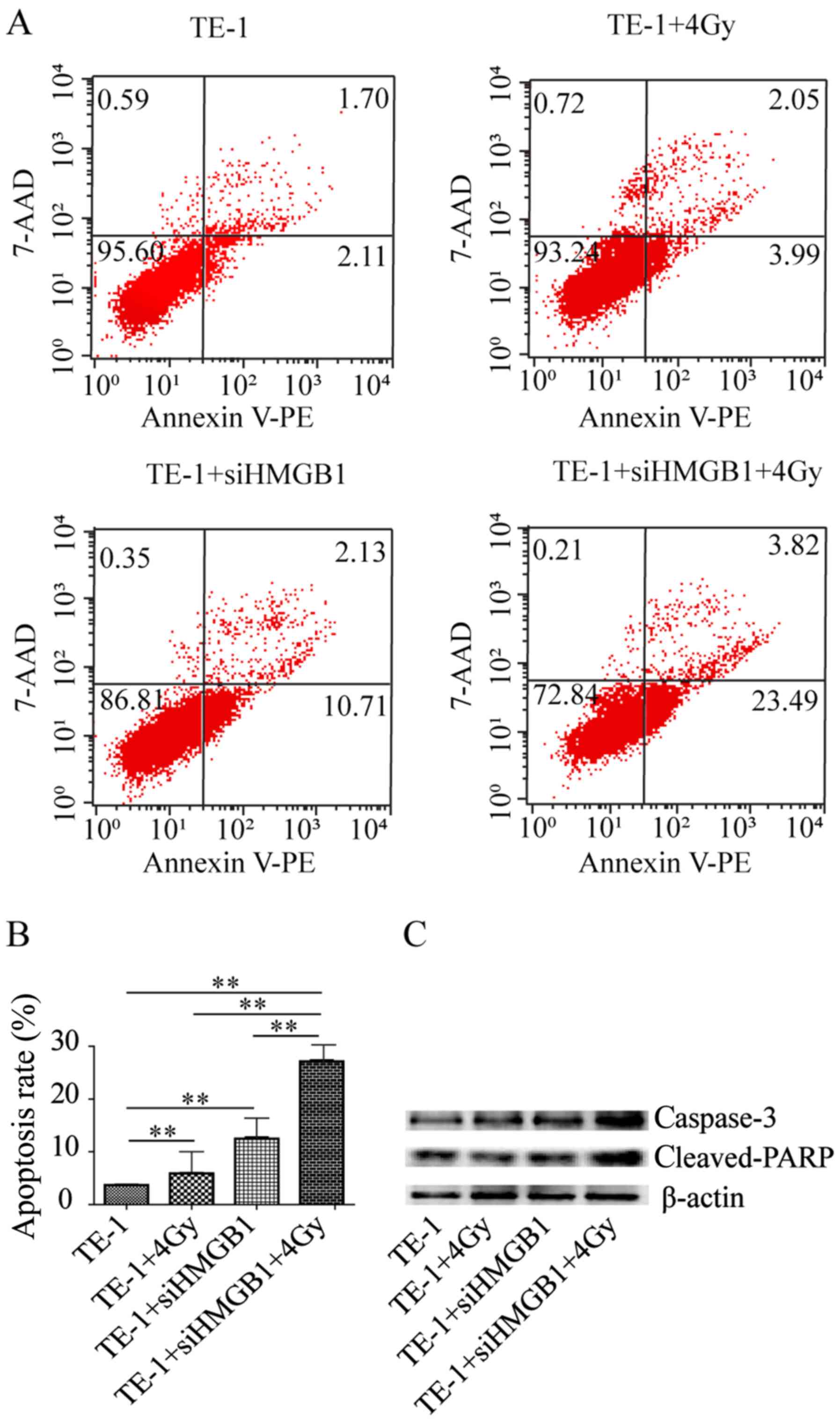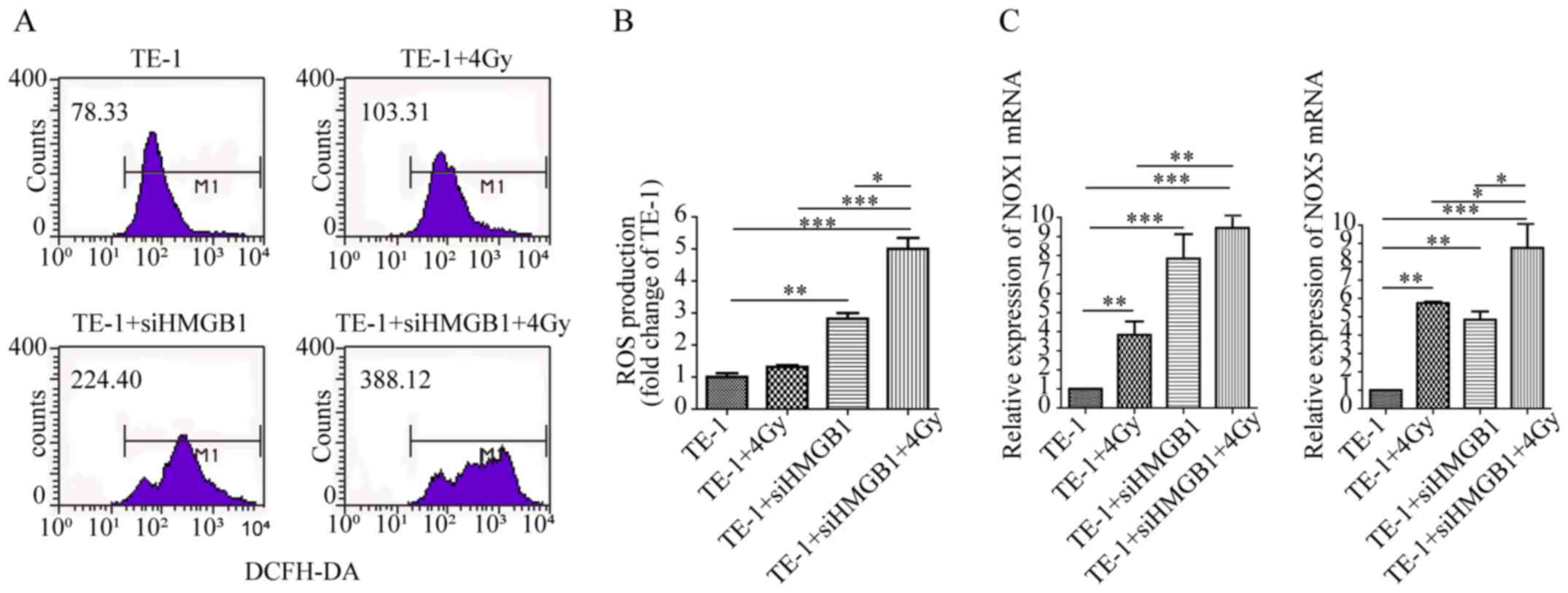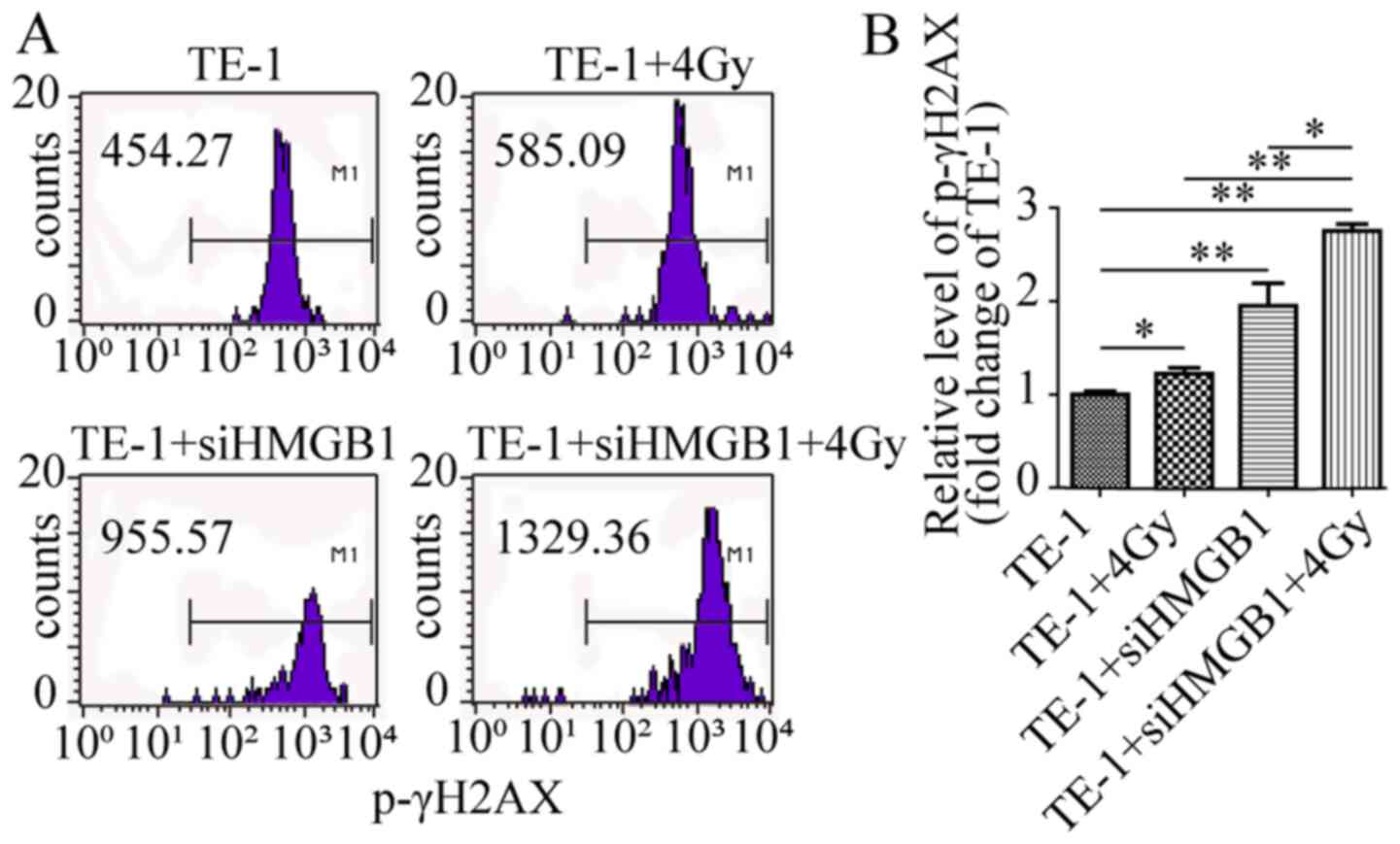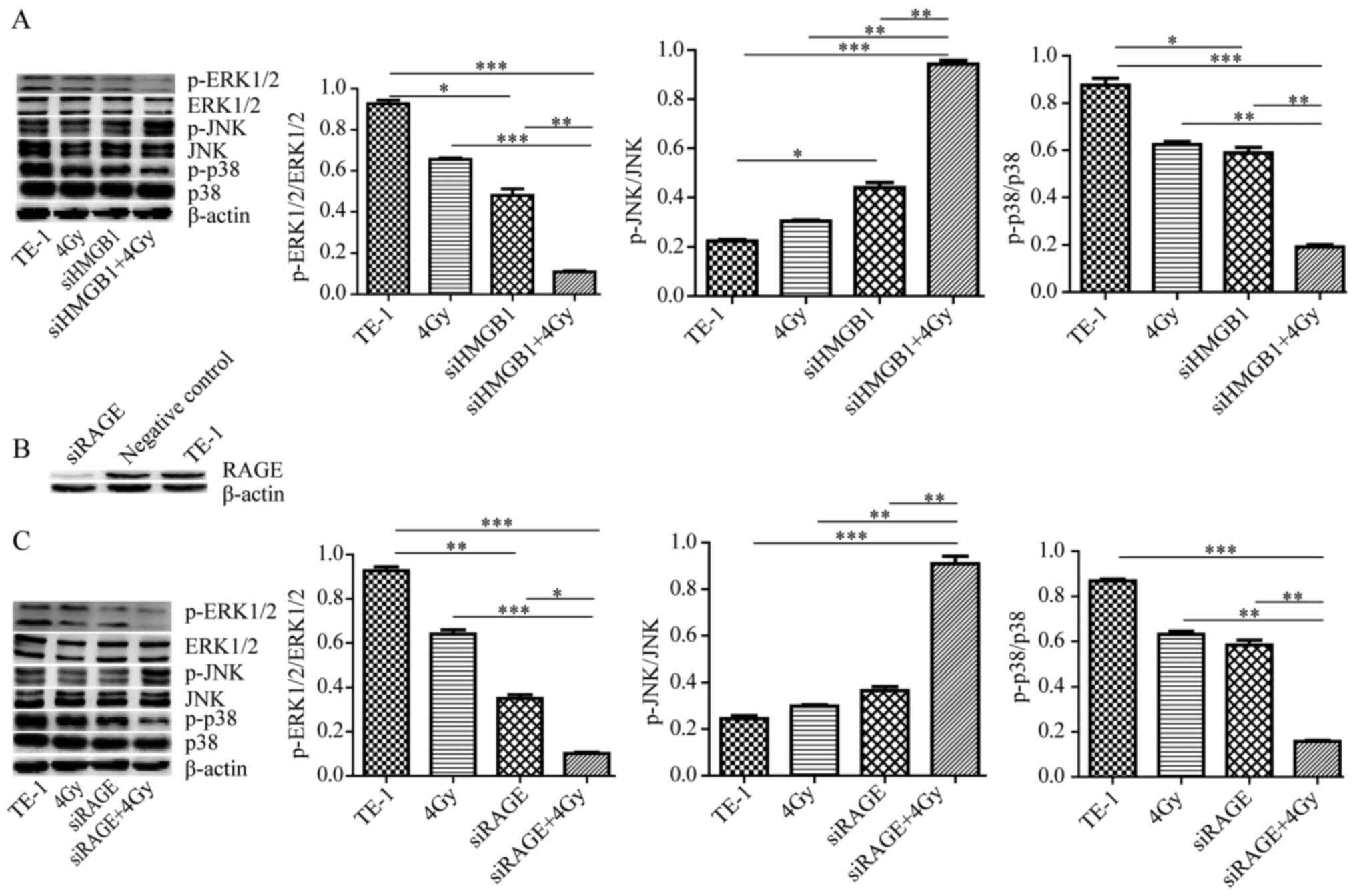|
1
|
Song Y, Li L, Ou Y, Gao Z, Li E, Li X,
Zhang W, Wang J, Xu L, Zhou Y, et al: Identification of genomic
alterations in oesophageal squamous cell cancer. Nature. 509:91–95.
2014. View Article : Google Scholar : PubMed/NCBI
|
|
2
|
Xu J, Chen Y, Zhang R, Song Y, Cao J, Bi
N, Wang J, He J, Bai J, Dong L, et al: Global and targeted
metabolomics of esophageal squamous cell carcinoma discovers
potential diagnostic and therapeutic biomarkers. Mol Cell
Proteomics. 12:1306–1318. 2013. View Article : Google Scholar : PubMed/NCBI
|
|
3
|
Rustgi AK and El-Serag HB: Esophageal
carcinoma. N Engl J Med. 371:2499–2509. 2014. View Article : Google Scholar : PubMed/NCBI
|
|
4
|
Lin Y, Totsuka Y, He Y, Kikuchi S, Qiao Y,
Ueda J, Wei W, Inoue M and Tanaka H: Epidemiology of esophageal
cancer in Japan and China. J Epidemiol. 23:233–242. 2013.
View Article : Google Scholar : PubMed/NCBI
|
|
5
|
Zhang Y: Epidemiology of esophageal
cancer. World J Gastroenterol. 19:5598–5606. 2013. View Article : Google Scholar : PubMed/NCBI
|
|
6
|
Wang G, Liu L, Sharma S, Liu H, Yang W,
Sun X and Dong Q: Bmi-1 confers adaptive radioresistance to
KYSE-150R esophageal carcinoma cells. Biochem Biophys Res Commun.
425:309–314. 2012. View Article : Google Scholar : PubMed/NCBI
|
|
7
|
Hosseinimehr SJ: The protective effects of
trace elements against side effects induced by ionizing radiation.
Radiat Oncol J. 33:66–74. 2015. View Article : Google Scholar : PubMed/NCBI
|
|
8
|
Luo D, Wang Z and Wu J, Jiang C and Wu J:
The role of hypoxia inducible factor-1 in hepatocellular carcinoma.
BioMed Res Int. 2014:4092722014. View Article : Google Scholar : PubMed/NCBI
|
|
9
|
Maraldi T: Natural compounds as modulators
of NADPH oxidases. Oxid Med Cell Longev. 2013:2716022013.
View Article : Google Scholar : PubMed/NCBI
|
|
10
|
Endres L, Begley U, Clark R, Gu C,
Dziergowska A, Małkiewicz A, Melendez JA, Dedon PC and Begley TJ:
Alkbh8 regulates selenocysteine-protein expression to protect
against reactive oxygen species damage. PLoS One. 10:e01313352015.
View Article : Google Scholar : PubMed/NCBI
|
|
11
|
Rogakou EP, Pilch DR, Orr AH, Ivanova VS
and Bonner WM: DNA double-stranded breaks induce histone H2AX
phosphorylation on serine 139. J Biol Chem. 273:5858–5868. 1998.
View Article : Google Scholar : PubMed/NCBI
|
|
12
|
Probin V, Wang Y and Zhou D:
Busulfan-induced senescence is dependent on ROS production upstream
of the MAPK pathway. Free Radic Biol Med. 42:1858–1865. 2007.
View Article : Google Scholar : PubMed/NCBI
|
|
13
|
Chung EJ, Urick ME, Kurshan N, Shield W
III, Asano H, Smith PD, Scroggins BS, Burkeen J and Citrin DE:
MEK1/2 inhibition enhances the radiosensitivity of cancer cells by
downregulating survival and growth signals mediated by EGFR
ligands. Int J Oncol. 42:2028–2036. 2013. View Article : Google Scholar : PubMed/NCBI
|
|
14
|
Dhillon AS, Hagan S, Rath O and Kolch W:
MAP kinase signalling pathways in cancer. Oncogene. 26:3279–3290.
2007. View Article : Google Scholar : PubMed/NCBI
|
|
15
|
Ameziane-El-Hassani R, Talbot M, de Souza
Dos Santos MC, Al Ghuzlan A, Hartl D, Bidart JM, De Deken X, Miot
F, Diallo I, de Vathaire F, et al: NADPH oxidase DUOX1 promotes
long-term persistence of oxidative stress after an exposure to
irradiation. Proc Natl Acad Sci USA. 112:5051–5056. 2015.
View Article : Google Scholar : PubMed/NCBI
|
|
16
|
Golding SE, Morgan RN, Adams BR, Hawkins
AJ, Povirk LF and Valerie K: Pro-survival AKT and ERK signaling
from EGFR and mutant EGFRvIII enhances DNA double-strand break
repair in human glioma cells. Cancer Biol Ther. 8:730–738. 2009.
View Article : Google Scholar : PubMed/NCBI
|
|
17
|
Lotze MT and Tracey KJ: High-mobility
group box 1 protein (HMGB1): Nuclear weapon in the immune arsenal.
Nat Rev Immunol. 5:331–342. 2005. View
Article : Google Scholar : PubMed/NCBI
|
|
18
|
Chuangui C, Peng T and Zhentao Y: The
expression of high mobility group box 1 is associated with lymph
node metastasis and poor prognosis in esophageal squamous cell
carcinoma. Pathol Oncol Res. 18:1021–1027. 2012. View Article : Google Scholar : PubMed/NCBI
|
|
19
|
Livak KJ and Schmittgen TD: Analysis of
relative gene expression data using real-time quantitative PCR and
the 2(-Delta Delta C(T)) method. Methods. 25:402–408. 2001.
View Article : Google Scholar : PubMed/NCBI
|
|
20
|
Jiao Y, Wang HC and Fan SJ: Growth
suppression and radiosensitivity increase by HMGB1 in breast
cancer. Acta Pharmacol Sin. 28:1957–1967. 2007. View Article : Google Scholar : PubMed/NCBI
|
|
21
|
Ellerman JE, Brown CK, de Vera M, Zeh HJ,
Billiar T, Rubartelli A and Lotze MT: Masquerader: High mobility
group box-1 and cancer. Clin Cancer Res. 13:2836–2848. 2007.
View Article : Google Scholar : PubMed/NCBI
|
|
22
|
Chen CG, Tang P and Yu ZT: Effect of HMGB1
on the VEGF-C expression and proliferation of esophageal squamous
cancer cells. Zhonghua Zhong Liu Za Zhi. 34:566–570. 2012.(In
Chinese). PubMed/NCBI
|
|
23
|
Yamanaka S, Katayama E, Yoshioka K, Nagaki
S, Yoshida M and Teraoka H: Nucleosome linker proteins HMGB1 and
histone H1 differentially enhance DNA ligation reactions. Biochem
Biophys Res Commun. 292:268–273. 2002. View Article : Google Scholar : PubMed/NCBI
|
|
24
|
Ke S, Zhou F, Yang H, Wei Y, Gong J, Mei
Z, Wu L, Yu H and Zhou Y: Downregulation of high mobility group box
1 modulates telomere homeostasis and increases the radiosensitivity
of human breast cancer cells. Int J Oncol. 46:1051–1058. 2015.
View Article : Google Scholar : PubMed/NCBI
|
|
25
|
Zhang H, Gao XS, Zhao J, Xiong W, Zhang M,
Li HZ, Zhou DM, Jin X and Zhang DS: Differential gene expression
profiles of DNA repair genes in esophageal cancer cells after X-ray
irradiation. Chin J Cancer. 29:865–872. 2010. View Article : Google Scholar : PubMed/NCBI
|
|
26
|
Xie Q, Zhou Y, Lan G, Yang L, Zheng W,
Liang Y and Chen T: Sensitization of cancer cells to radiation by
selenadiazole derivatives by regulation of ROS-mediated DNA damage
and ERK and AKT pathways. Biochem Biophys Res Commun. 449:88–93.
2014. View Article : Google Scholar : PubMed/NCBI
|
|
27
|
Lam RK, Fung YK, Han W and Yu KN: Rescue
effects: Irradiated cells helped by unirradiated bystander cells.
Int J Mol Sci. 16:2591–2609. 2015. View Article : Google Scholar : PubMed/NCBI
|
|
28
|
Guerriero JL, Ditsworth D, Catanzaro JM,
Sabino G, Furie MB, Kew RR, Crawford HC and Zong WX: DNA alkylating
therapy induces tumor regression through an HMGB1-mediated
activation of innate immunity. J Immunol. 186:3517–3526. 2011.
View Article : Google Scholar : PubMed/NCBI
|
|
29
|
Nicholson DW, Ali A, Thornberry NA,
Vaillancourt JP, Ding CK, Gallant M, Gareau Y, Griffin PR, Labelle
M, Lazebnik YA, et al: Identification and inhibition of the
ICE/CED-3 protease necessary for mammalian apoptosis. Nature.
376:37–43. 1995. View
Article : Google Scholar : PubMed/NCBI
|
|
30
|
Lazebnik YA, Kaufmann SH, Desnoyers S,
Poirier GG and Earnshaw WC: Cleavage of poly(ADP-ribose) polymerase
by a proteinase with properties like ICE. Nature. 371:346–347.
1994. View
Article : Google Scholar : PubMed/NCBI
|
|
31
|
Roehlecke C, Schumann U, Ader M, Brunssen
C, Bramke S, Morawietz H and Funk RH: Stress reaction in outer
segments of photoreceptors after blue light irradiation. PLoS One.
8:e715702013. View Article : Google Scholar : PubMed/NCBI
|
|
32
|
Bedard K and Krause KH: The NOX family of
ROS-generating NADPH oxidases: Physiology and pathophysiology.
Physiol Rev. 87:245–313. 2007. View Article : Google Scholar : PubMed/NCBI
|
|
33
|
Chen X, Wang Y, Liu J, Xu P, Zhang XM,
Tian YY, Xue YM, Gao XY, Liu Y and Wang JH: Synergistic effect of
HMGB1 knockdown and cordycepin in the K562 human chronic myeloid
leukemia cell line. Mol Med Rep. 12:4462–4468. 2015. View Article : Google Scholar : PubMed/NCBI
|
|
34
|
Mohammad G, Alam K, Nawaz MI, Siddiquei
MM, Mousa A and Abu El-Asrar AM: Mutual enhancement between
high-mobility group box-1 and NADPH oxidase-derived reactive oxygen
species mediates diabetes-induced upregulation of retinal apoptotic
markers. J Physiol Biochem. 71:359–372. 2015. View Article : Google Scholar : PubMed/NCBI
|
|
35
|
Nair AR, Ebenezer PJ, Saini Y and Francis
J: Angiotensin II-induced hypertensive renal inflammation is
mediated through HMGB1-TLR4 signaling in rat tubulo-epithelial
cells. Exp Cell Res. 335:238–247. 2015. View Article : Google Scholar : PubMed/NCBI
|
|
36
|
Kehrer JP: Free radicals as mediators of
tissue injury and disease. Crit Rev Toxicol. 23:21–48. 1993.
View Article : Google Scholar : PubMed/NCBI
|
|
37
|
Ye C, Sun NX, Ma Y, Zhao Q, Zhang Q, Xu C,
Wang SB, Sun SH, Wang F and Li W: MicroRNA-145 contributes to
enhancing radiosensitivity of cervical cancer cells. FEBS Lett.
589:702–709. 2015. View Article : Google Scholar : PubMed/NCBI
|
|
38
|
Weng H, Deng Y, Xie Y, Liu H and Gong F:
Expression and significance of HMGB1, TLR4 and NF-κB p65 in human
epidermal tumors. BMC Cancer. 13:3112013. View Article : Google Scholar : PubMed/NCBI
|
|
39
|
Moser B, Janik S, Schiefer AI, Müllauer L,
Bekos C, Scharrer A, Mildner M, Rényi-Vámos F, Klepetko W and
Ankersmit HJ: Expression of RAGE and HMGB1 in thymic epithelial
tumors, thymic hyperplasia and regular thymic morphology. PLoS One.
9:e941182014. View Article : Google Scholar : PubMed/NCBI
|
|
40
|
Kang R, Tang D, Livesey KM, Schapiro NE,
Lotze MT and Zeh HJ III: The Receptor for Advanced Glycation
End-products (RAGE) protects pancreatic tumor cells against
oxidative injury. Antioxid Redox Signal. 15:2175–2184. 2011.
View Article : Google Scholar : PubMed/NCBI
|
|
41
|
Chen YR, Meyer CF and Tan TH: Persistent
activation of c-Jun N-terminal kinase 1 (JNK1) in gamma
radiation-induced apoptosis. J Biol Chem. 271:631–634. 1996.
View Article : Google Scholar : PubMed/NCBI
|
|
42
|
Shao C, Lyng FM, Folkard M and Prise KM:
Calcium fluxes modulate the radiation-induced bystander responses
in targeted glioma and fibroblast cells. Radiat Res. 166:479–487.
2006. View Article : Google Scholar : PubMed/NCBI
|
|
43
|
Faqihi F, Neshastehriz A, Soleymanifard S,
Shabani R and Eivazzadeh N: Radiation-induced bystander effect in
non-irradiated glioblastoma spheroid cells. J Radiat Res (Tokyo).
56:777–783. 2015. View Article : Google Scholar : PubMed/NCBI
|
|
44
|
Maa SH, Wang CH, Liu CY, Lin HC, Huang KH
and Kuo HP: Endogenous nitric oxide downregulates the Bcl-2
expression of eosinophils through mitogen-activated protein kinase
in bronchial asthma. J Allergy Clin Immunol. 112:761–767. 2003.
View Article : Google Scholar : PubMed/NCBI
|
|
45
|
Liu L, Rezvani HR, Back JH, Hosseini M,
Tang X, Zhu Y, Mahfouf W, Raad H, Ragi G, Athar M, et al:
Inhibition of p38 MAPK signaling augments skin tumorigenesis via
NOX2 driven ROS generation. PLoS One. 9:e972452014. View Article : Google Scholar : PubMed/NCBI
|















